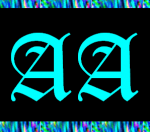The article titled “Hidden Numerical Sequences in the Periodic Table: The Strange Case of Correlation between the Atomic Numbers of Technetium and Protactinium” in ResearchGate is receiving general and academic attention. Atomic numbers of Hydrogen, Helium, Boron, Neon, Calcium, Technetium, and Protactinium are members of a cryptic numerical progression series. Contextually, this research paper involves postulation and hypothesis formulation around some elements from the periodic table. The atomic numbers of these selected elements form a numerical series. Let’s call it an arithmetico-exponential series. The main assumption to decipher the existence of such a series is instigated by the occurrence of certain elements that behave very exceptionally.
However, there are certain questions for future research. Why are atomic numbers expressed in terms of integers? Are negative or fractional atomic numbers possible? In the case negative atomic number be possible, we are most likely going to have an ‘electron rest negative-mass’ value too (which will possibly be expressed in terms of atomic mass unit). And in the case this happens in reality (that is just theoretical chemistry though), will it affect the observed atomic weight of Hydrogen? Should it be given a neutronic number equal to zero, and should the periodic table be rearranged according to neutronic numbers? If this happens, then the periodic table itself would start to ooze off at the post Polonium nucleic configurations.
Copyright registration number of this research paper is cg5QcXsO0hQScErG

